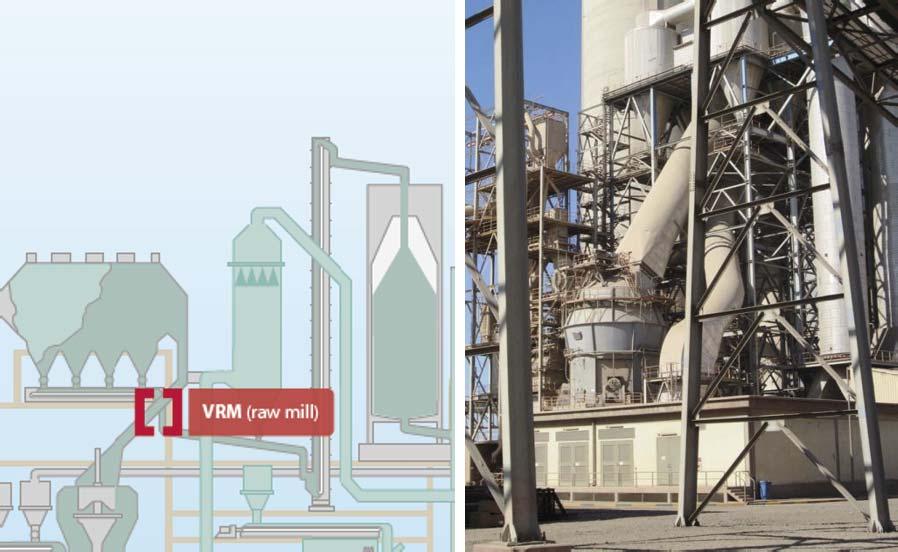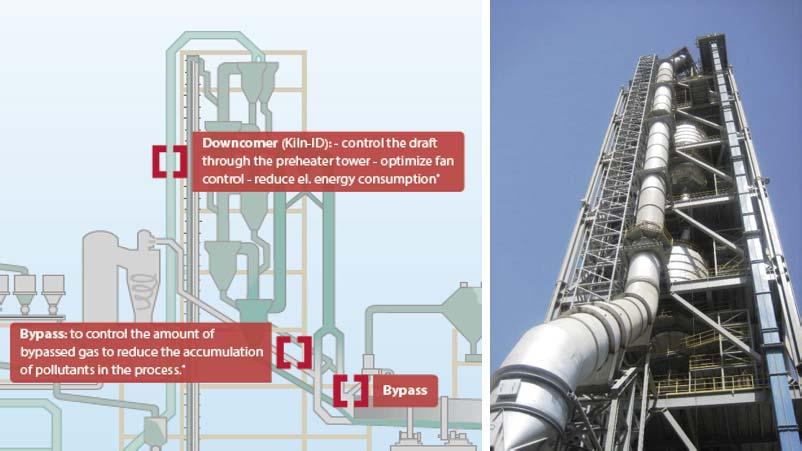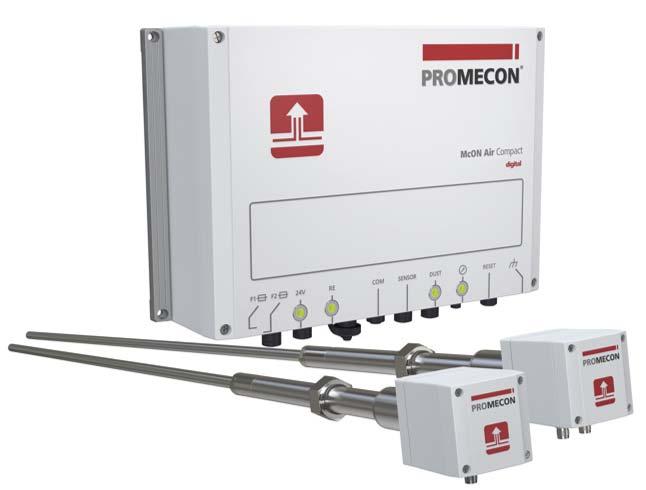
7 minute read
Greener Times Call For Greener Measures





Hans Conrads, PROMECON, considers how measurement technologies can be optimised in order to achieve more ‘green’ cement production.


The cement industry is one of the most fundamental to the world economy. Without cement, new construction projects for developing countries would be unthinkable and further growth and modernisation, even of the top industry nations, is likely to fail. Wherever a country starts from grass roots to develop its economy, the erection of cement plants is one of the fi rst things to be carried out. Cement production has grown into a global industry. However, the global cement industry has become a victim of its own success.
Cement production is not only essential, but it is also highly energy intensive, has hazardous pollutant emissions potential, and releases all of the bound CO2 in limestone, as well as in fi red fuels. The good news is, however, that there is also potential for cement plants to reduce their ecological footprints. Besides the technological changes that may be brought about in the coming decades, there is plenty of low hanging fruit that can be reached by fairly basic and simple optimisation steps in existing plants.
Measurement technology

Raw mill application.
Downcomer application.
McON Air Compact – PROMECON’s digital fl ow measurement systems.
PROMECON has recently been focusing on a few very basic and some diffi cult measurement applications: The measurement of hot and dusty gas fl ows. The measurement of enthalpy fl ows. The measurement of solid material transport in pneumatic conveying lines.


These measurements are key to many process problems in cement plants which can be optimised. This article will highlight the most important ones and how they can assist in the optimisation of the plant’s ecological impact.
Fan power reduction
Fan power is often the biggest drain of electrical energy and represents a large portion of the overall energy consumption in the cement plant. It is a common problem that fans in cement plants are not operated at their optimum set point. The result is an overdraught in many fans. The electricity consumption of a frequency controlled fan rises with its fl ow by the third power. Therefore, an overdraft of 10% will result in 27% higher power consumption. The excess power consumption has two major impacts: Firstly, it is costly, and secondly, it has a large carbon footprint, as most electric power comes from coal fi red generation. A reduction in electric fan power thus has a direct ecological impact.
PROMECON has helped to optimise fan power in main rotary kiln draught fans, raw mill fans, fi nished product mill fans, as well as waste heat recovery fans. These fans traditionally run without a drift free and stable fl ow measurement because of the dust impact. In many plants, the installed dP measurements are idle and not in use due to the large
maintenance problems associated with them and operator reliance on other, more crude, values to best estimate a safe operation for the fans.
The PROMECON measurement helps to provide an accurate value for the fl ow, allowing the reduction of fan power whilst keeping a safe operating margin.
Raw mill
One big consumer of fan power is the raw mill. Raw mill operation relies on the fact that the bed depth of the raw material on the milling table is controlled. One big concern is the overloading of the grinding table, which will cause the mill to drown and then trip. The way to safely avoid this is to ensure a minimum gas fl ow through the mill. However, with uncertain traditional gas fl ow measurements, operators tend to overdraught the mill in order to be on the safe side. This can result in 10% – 15% higher fl ows as a consequence.
An accurate and digital fl ow measurement will allow a much lower tolerance on the low fl ow limit and hence safer fan power. Installations of a raw mill at LafargeHolcim have revealed savings of 1 kWh/t of raw meal. This was equal to 150 kW for a 150 tph mill.
Downcomer
The fl ow of gas through the rotary kiln is controlled by a large ID fan. Usually the control of ID fans results in a lot of process noise as the main control value, the O2 on the inlet, or the downcomer, has a long lag time, and hence causes larger long-term fl uctuations of the ID fan power.
The goal here is a steadier kiln operation. This goal has been achieved in many plants by the use of a PROMECON digital process gas fl ow meter.
The exact and drift free gas fl ow value can be used in a cascaded controller to stabilise the ID fan fl ow in the short term, while the O2 measurement is still used in order for the O2 to remain at its target. The result of this control enhancement is a far more fl at lined gas fl ow rate through the kiln, resulting in direct fuel savings of several percent, which can be over €2000 per day. As the fuel is a direct emitter of CO2 as well as other hazardous pollutants and dust, the impact will be signifi cant.
Also, the more fl at lined operation of the fan has a signifi cant impact on the electric power consumption, because of the non-linearity of the power curve of a fan. The fact that electricity consumption increases with fl ow to the third power means that any swinging of operation will result in excessive power consumption as compared to a stable operation.
Pre-calciner
Modern plants have pre-calciners that are upstream close to the kiln inlet. They calcine the raw meal before it enters the kiln. Beside the hot gas from the kiln, they need an additional heat source in order to drive out the CO2 from the raw meal. For this, a fuel is burnt in the pre-calciner. This fuel can be either coal or secondary fuel. In order to burn the fuel in the pre-calciner, oxygen is needed. However, this oxygen is not available from the kiln, so the necessary combustion air comes from the tertiary air duct.
The problem here is that pre-calciners can form large amounts of thermal NOx. In fact, a lot of the NOx that can be avoided at the main burner can later on be formed in the pre-calciner again. Authorities around the world have been very tolerant about NOx from cement plants thus far, but this tolerance is coming to an end, and plants are being forced to reduce their NOx signifi cantly. One way to achieve this could be secondary measures such as SNCR or even SCR systems, which demand high investment as well as high operation costs due to their NH3 consumption.
Another very cost-effi cient way is to measure the fuel fl ow to the calciner as well as the tertiary air fl ow in order to adjust the oxygen fl ow to the pre-calciner. A better combustion control of the pre-calciner will result in a much lower thermal NOx formation as well as a lower NH3 consumption. The downtime of the pre-calciner can also be signifi cantly reduced.
There are further points for optimisation such as: Optimisation of bypass gas fl ow. Any and all recirculation ducts. Direct measurement of cyclone gas outlet fl ow. The waste heat recovery side. Finished product mills.
PROMECON will continue to explore the cement making process and fi nd new solutions for clients worldwide to make the production of cement more ecologically compliant as well as cost-effi cient.
About the author
Hans Conrads holds an Electrical Engineering and Signal Processing degree from the RWTH University of Aachen, Germany. Hans has over 25 years of experience in the power industry as an entrepreneur and inventor of novel measurement systems to optimise the combustion of large steam generators. He also has multiple international patents and innovation awards and is the owner and CEO of PROMECON GmbH in Germany.










